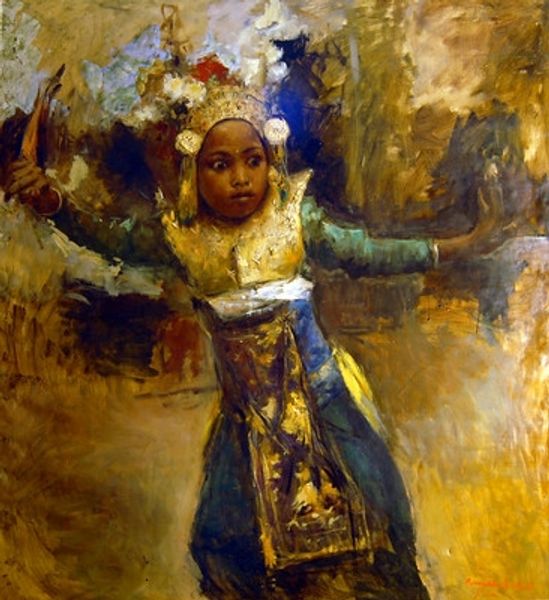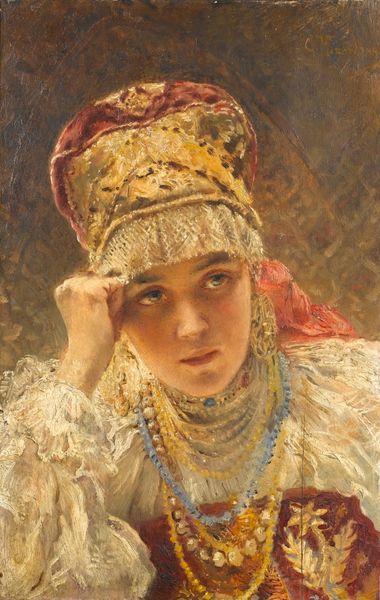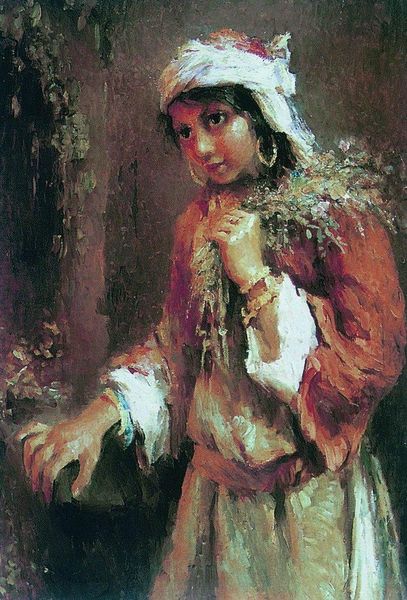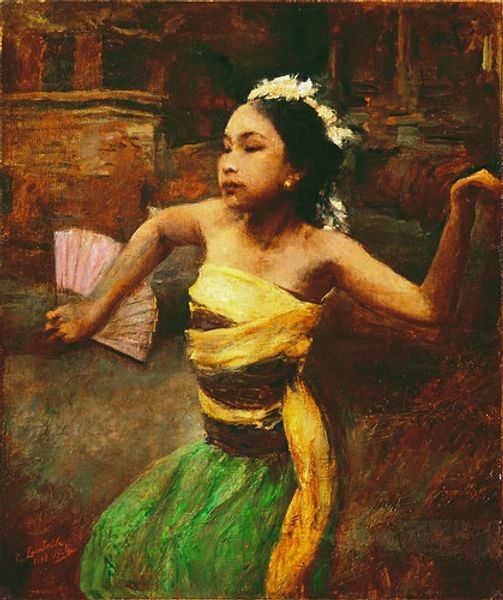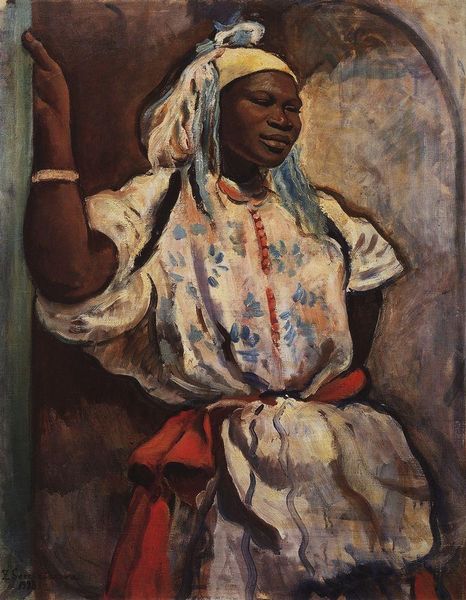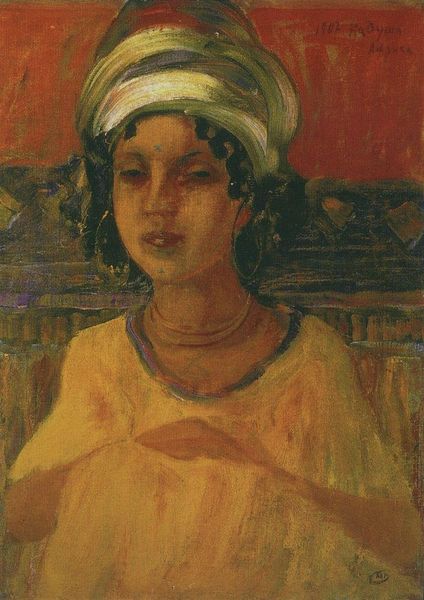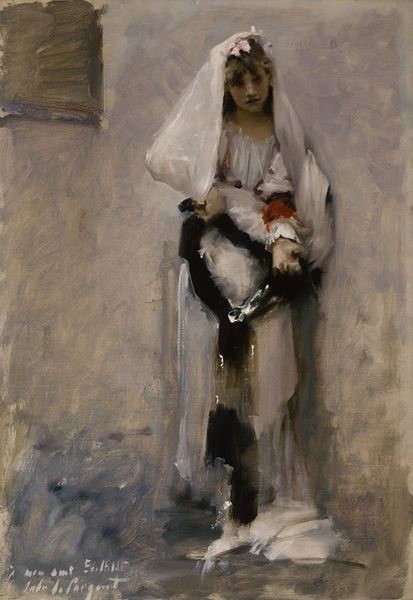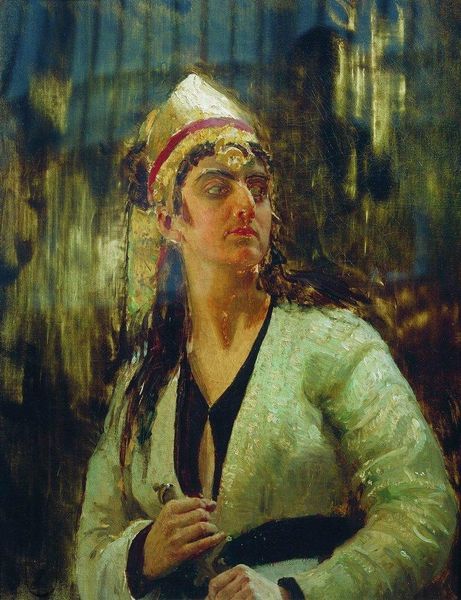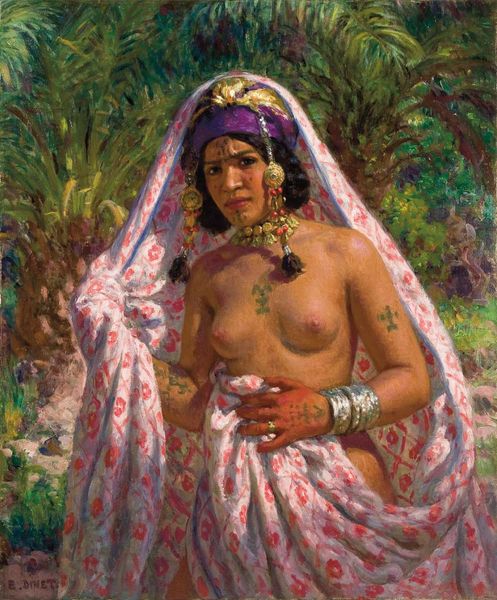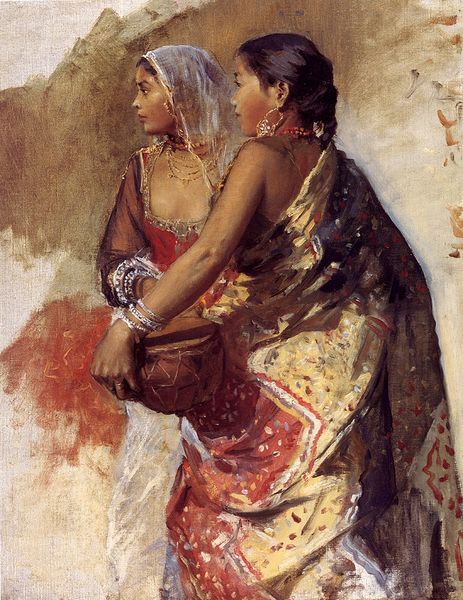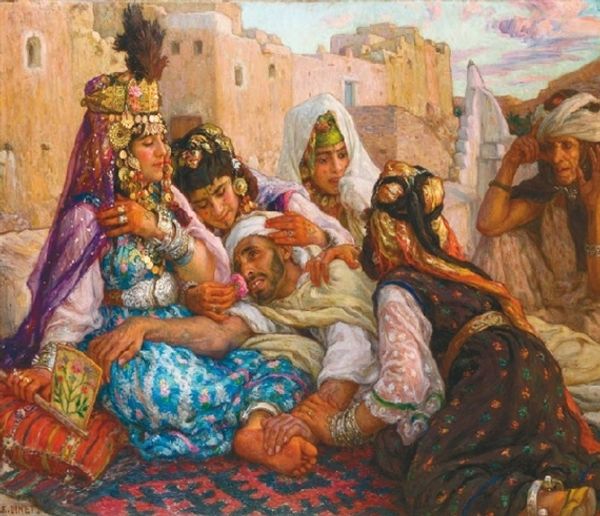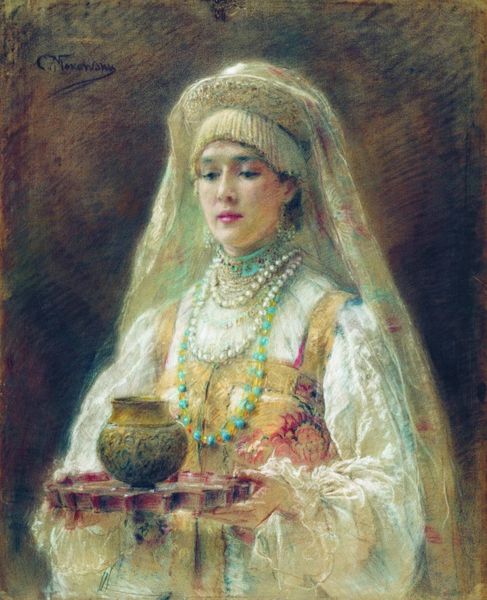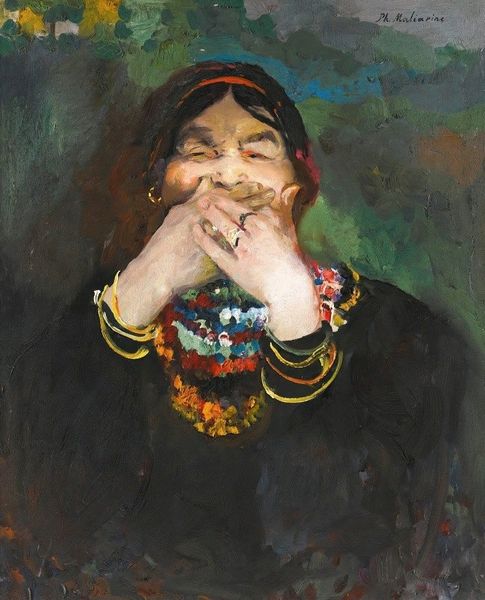
painting, oil-paint
#
portrait
#
gouache
#
painting
#
oil-paint
#
figuration
#
oil painting
#
orientalism
#
portrait art
#
realism
Copyright: Public domain
Curator: At first glance, it strikes me as ethereal, almost weightless, despite the obvious materiality of oil paint. The brushstrokes are broad but feel light. Editor: Indeed. We're looking at "Gambuh Dancer," an oil on canvas work created by Romualdo Locatelli in 1939. It beautifully captures a moment of Balinese dance. Curator: The dancer's posture is key. Her arms, held outwards, create a line that echoes the architecture, framing her within this cultural space. I can feel the presence of tradition emanating. Editor: I agree. Notice how her headdress dominates, drawing your eye to her stoic expression. It's as though she embodies something ancient, a ritual passing through her. These symbols connect to Balinese cultural memory. Curator: It's the details in the ornamentation, too. Look at the white collar contrasted with the darker, earthy tones of her clothing and the stone setting behind. What are those contrasts suggesting? Editor: I interpret those contrasts as showing the dichotomy between the ethereal and the terrestrial. The dance is of the earth but also of the gods. This tension creates a compelling energy, a bridge between realms. Curator: Precisely, and I think the limited color palette reinforces this, drawing on ochres and muted greens to ground the dancer, as does the use of realistic representation. This artistic decision roots the dancer within a historical and cultural continuum. Editor: Interesting. From my point of view, this orientalist framing emphasizes the foreign gaze of the artist more than the intrinsic cultural narrative. The very notion of realism clashes with the subject and makes us wonder where he's positioned himself within its cultural matrix. Curator: A valid point; nonetheless, whether perceived as a faithful document or an orientalist projection, I see it now as more than a visual record, or cultural memory preserved in portraiture. I am touched by this dancer as the figure of a person navigating belief systems across cultural strata. Editor: It offers us an interesting study into the function of symbols and technique, forcing a discourse on continuity and transition that can never be truly resolved.
Comments
No comments
Be the first to comment and join the conversation on the ultimate creative platform.
